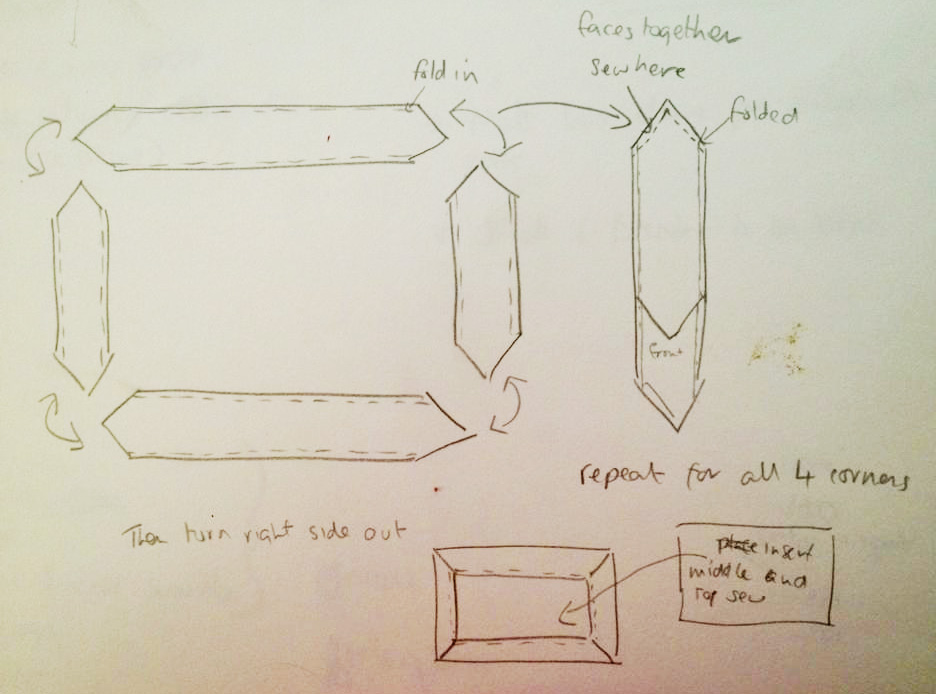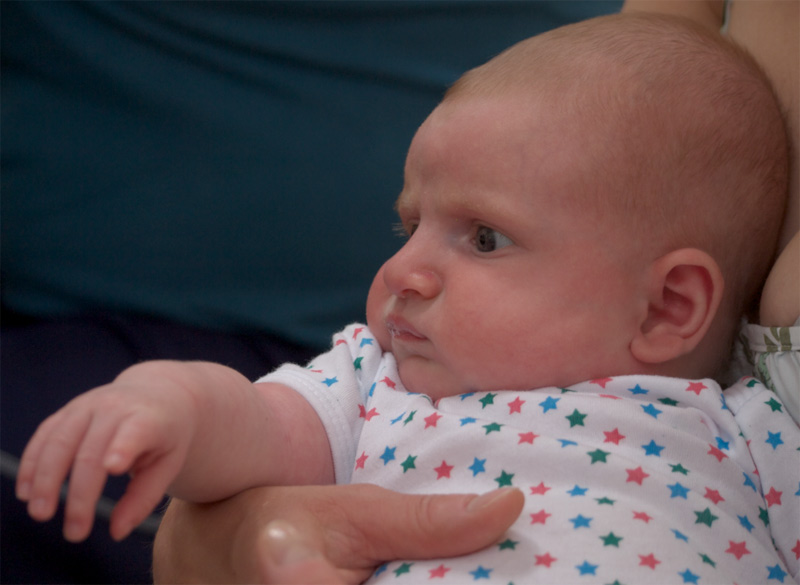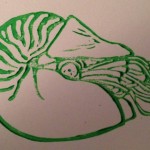It started with some mud.
I’d been thinking about an alternative alphabet thing for a while, and when two scientist friends decided to make a new tiny scientist.. well. GAME. ON.
Playing in my shed with some clay, the idea to make an AMAZING nightlight out of porcelain arrived. It would look smooth on the outside but has the alphabet and pictures etched on the inside, so when the light is turned on – magic pictures!!
.. this idea lasted until I remembered my homebodged raku kiln will not fire to vitreous porcelain temperatures.
THEN I decided I would make fabric alphabet cubes, I would PRINT these. With PRINTING.
I purchased some lino and cutting tools. Awwww yissss toys. Then some more printing inks. More colours. IMPORTANT.
I started making letters (mostly) at random.

I went a little bit mad for a while..

Then I decided that I would make the entire alphabet, and make it into a quilt.
Some maths later, I realised this would be about the size of a house.
The letters of the new person’s name! That is what I will do. Â Well, balls. I have only made one of those letters so far.
I made the design..

My fancy new phthalate, PVC, BPA, BBC, ITV free screen printing inks arrived..


There was a lot of fannying around decided what to use as a backing fabric. I ordered some bamboo velour (which is lovely), but then found some rust corduroy in my stash which seemed perfect. Warm and soft, yet tough and hard wearing. It contrasts very nicely with the coolness of the linen top, and provides a very substantial feel.
Next – fannying with whether to use quilt wadding (this is all new to me) and which wadding to use.
I want to make it be properly washable, so I was thinking of just having the linen top with a cotton or bamboo plush/velour backing, so that it’s hardly quilted at all. This is because I am suspicious of the washability of batting. Even if I am, I only want very light quiltingpaddinginserttechnicaltermhere.
Is batting bad for machine washing?
Actually I’ve got some polyester nubbly fleece and plain fleece (actually maybe i gave the last away I am not sure). Could I use that as the ‘quilting’?how about thin wool felt? That would survive a 40 if adequately quilted, right?
NEXT CONCERN
How do I make the layers stay together nicely for sewing in a way that doesn’t leave a residue? Can I use water soluble glue?
I think I have a walking foot.
I don’t know how it works.
I gleaned from the wonder that is Ravelry, that there are all sorts of strange glue sprays you can get (in america) and that they use elmer’s glue (which I worked out is pretty much just starch glue).
After endless research, I gave up on these crazy bought products and made some starch solution in a spray bottle (because a: couldn’t find this Sullivan brand mentioned by Intarweb ‘Merkins b: hate aerosols c: hate perfumed products) and used it to flatten everything out and then stick it together. It worked a treat! No pins! I hate pins. OH YES. YOU WILL DO MY BIDDING.
NEXT: a tester to check nothing would shrink in a horribly incompatible way and the ink wouldn’t come off etc etc etc

Onwards! Â Now I must finish all the block prints and their pictures..
OK this is not all of them but I am getting bored of all this typing.
The most troublesome bit was definitely the border. I watched a bunch of videos on youtube, whereupon I decided that a lot of people are bonkers. I played with some bits of paper and came up with the following method (which I did not entirely use, I made it much more complicated for myself)

Finally, I presented it to the new Autarch of Abingdon (HAIL)

TL;DR – I made a quilt!







